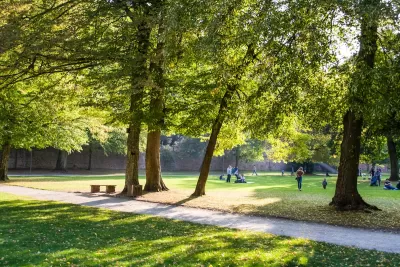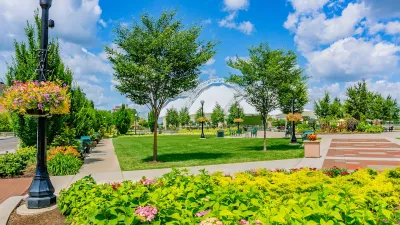The study reveals significant gaps in urban forestry, emphasizing the urgent need for reforms, innovative planting solutions, and expanded tree canopy to combat climate change and improve urban health.

The “3+30+300 rule,” a benchmark for greener cities introduced by urban forestry expert Professor Cecil Konijnendijk, sets standards for tree visibility, canopy cover, and park accessibility to enhance health, mitigate climate change, and create heat-resilient urban environments.
As reported by Thami Croeser, a study applying the rule to eight cities—Melbourne, Sydney, New York, Denver, Seattle, Buenos Aires, Amsterdam, and Singapore—revealed significant gaps in urban forestry infrastructure, with Singapore as the only city to pass all three criteria. Challenges include inadequate tree canopy coverage, insufficient access to parks, and issues like sparse planting and small tree sizes that limit shade and cooling benefits, even in cities renowned for their green initiatives.
Urban forests face structural challenges such as compacted soils, impermeable surfaces, and aggressive pruning practices that hinder tree growth and longevity. Sparse planting and restrictive engineering standards exacerbate these issues, making it difficult for cities to meet the benchmarks of the 3+30+300 rule. For example, while many buildings in Melbourne and Sydney have views of three trees, few achieve sufficient neighborhood canopy cover. Cities like Nice, France, face similar contradictions, with visible trees often being too small or too spread out to provide meaningful shade or ecological benefits.
To address these deficiencies, reforms are needed to prioritize trees as critical infrastructure alongside innovative planting solutions like soil vaults and permeable paving. These strategies not only enhance tree growth and longevity but also reduce urban flooding and improve environmental resilience. The study underscores the urgent need for cities worldwide to expand and protect urban forests, particularly as climate change intensifies and urban populations grow, emphasizing that comprehensive green infrastructure is essential for sustainable, livable cities.
FULL STORY: We rated the urban forests of 8 global cities – only Singapore passed the 30% canopy test

Trump Administration Could Effectively End Housing Voucher Program
Federal officials are eyeing major cuts to the Section 8 program that helps millions of low-income households pay rent.

Planetizen Federal Action Tracker
A weekly monitor of how Trump’s orders and actions are impacting planners and planning in America.

Ken Jennings Launches Transit Web Series
The Jeopardy champ wants you to ride public transit.

Washington Legislature Passes Rent Increase Cap
A bill that caps rent increases at 7 percent plus inflation is headed to the governor’s desk.

From Planning to Action: How LA County Is Rethinking Climate Resilience
Chief Sustainability Officer Rita Kampalath outlines the County’s shift from planning to implementation in its climate resilience efforts, emphasizing cross-departmental coordination, updated recovery strategies, and the need for flexible funding.

New Mexico Aging Department Commits to Helping Seniors Age ‘In Place’ and ‘Autonomously’ in New Draft Plan
As New Mexico’s population of seniors continues to grow, the state’s aging department is proposing expanded initiatives to help seniors maintain their autonomy while also supporting family caregivers.
Urban Design for Planners 1: Software Tools
This six-course series explores essential urban design concepts using open source software and equips planners with the tools they need to participate fully in the urban design process.
Planning for Universal Design
Learn the tools for implementing Universal Design in planning regulations.
Heyer Gruel & Associates PA
Ada County Highway District
Institute for Housing and Urban Development Studies (IHS)
City of Grandview
Harvard GSD Executive Education
Toledo-Lucas County Plan Commissions
Salt Lake City
NYU Wagner Graduate School of Public Service





























